We return to mountain peaks above the Moria mines. Snow and wind sweep across jagged slopes as the camera zooms ever closer. There are voices on the wind. No, not on the wind, but in the mountain itself! Suddenly we slip through a crack, delving deep into the rocks themselves. Deeper we go, flying through stone to appear at the Bridge of Khazad-dûm. As if we’ve stepped back in time, Gandalf (Ian McKellan) is there, facing his mightiest foe, a Balrog. We arrive only in time to see his defiance as he shouts the words “You shall not pass!” The bridge collapses, carrying the Balrog into the inky depths of Moria and now seemingly inevitably dragging the heroic gray wizard down with him. Only this time, rather than following his companions of the fellowship as they flee the dangerous underground kingdom, we fall with Gandalf, deeper and deeper into the depths of the earth itself.
There is no recap. No reminder of what we saw before. No pandering to people who have never gotten off their butt to watch the first film. The Two Towers knows who its audience is and thus jumps straight into what those people have all been waiting for… the rest of the story.
That’s the mindset behind the latest and eagerly anticipated second installment in the already wildly successful Lord of the Rings trilogy. As a follow-up to Peter Jackson’s grand epic The Fellowship of the Ring, The Two Towers is every bit the first film’s equal as it continues to propel this story forward as a future landmark in cinematic history.
Filmed in one big chunk, much as the original novel on which the films are based is really one book not three, The Lord of the Rings movies are not so much a trilogy as one gigantic, sweeping epic broken up into three parts to give us all time to run to the bathroom. As such, it’s no surprise to see the same love for the material and the masterwork that these people are creating here every bit as evident in this installment as it was in the first. Yet, that’s not to say everything is the same in the lands of Middle Earth. The world has changed and its characters right along with it. The fellowship is broken, our nine companions scattered, lost, or dead, some never to be fully re-united. This leaves The Two Towers following several different storylines, as opposed to focusing primarily on one as director Jackson was able to do in Fellowship.
Along these now separate paths, we’re introduced to new characters and incredible new places in Tolkien’s magical Middle Earth. As before, with newcomer and old hat alike, the performances from these people continue to be more vibrant and alive than anything you’re likely to see in just about any other film not starring Tom Hanks. The effects as well speak of a quality unlike anything you’d expect from such a fantastical tale, easily exceeding and pushing forward the limits of today’s technology. This is done not through an overuse of cgi, but rather through a masterful blending of location shoots, sets, models, and succinctly used computer generated imagery.
In fact, despite Jackson’s propensity for using models rather than not-yet-realistic cgi, Towers actually features not one, but several completely cgi characters. Walking tallest among these is Treebeard, chief of the Ents, a race of forest striding tree-shepherds who look nearly as treeish as the foliage they herd. Voiced by John Rhys-Davies, who also plays the spectacularly used dwarf Gimli in the film, Treebeard is a splendid creation. In wide shots, he’s rendered beautifully with his massive scope and size nicely contrasted with the even more massive landscape around him. He and his brethren fit so perfectly into their environment that it’s easy to at last see what Tolkien had in mind when he first imagined Ents on paper so many years ago. In close-ups it becomes more difficult for the WETA effects crew to maintain that same level of quality. Often, Treebeard looks almost like a stop-motion character who wandered over from the set of The Nightmare Before Christmas. But even that is infinitely preferable to the plasticy cgi creations usually present in other modern effects heavy innovations. The warmth of the character itself, and the brilliant way in which he interacts with live actors easily endears and captivates the audience, as does the Ent subplot, which sees a gentle and mild race driven to an unthinkable war.
Ironically, the newest and most important addition to the Lord of the Rings mythos this time is also another cgi creation. Integral to the story, Gollum is not some animated footnote or one note gag real. The character is as deeply fleshed out and real as any portrayed by live actors. Voiced by Andy Serkis, Gollum is a twisted and ancient creature, a living example of what happens when someone allows himself too much exposure to the all-powerful One Ring. He stalks Frodo (Elijah Wood) and Sam (Sean Astin) as they journey to Mordor, with the ring becoming an increasingly painful burden for our hobbit-hero Frodo to bear. Disturbed and demented, Gollum serves as their guide, the only person who knows secret ways into Mordor. He leads them true while simultaneously struggling with himself, plotting death and destruction for the two hobbits. I’ve heard that New Line Cinema is actually pushing Gollum for an Oscar… and it’s easy to see why. This isn’t some cheap Jar-Jar Binks, inserted for laughable amusement, an ill-fitting showcase for the wonders of cgi. Gollum is the first computer-generated character who can actually act and a scene-stealer wherever he shows up.
But more than before, the real centerpiece of this film is the broodingly dark Ranger Aragorn (Viggo Mortensen). For the first time he begins to fully make the transition from skulking brush-warrior to kingly leader of men. Picking up his tale right where we left off, The Two Towers sees him and his oddly matched companions, Gimli (John-Rhys Davies) and Legolas (Orlando Bloom), in hot pursuit of a band of Orcs who’ve kidnapped Hobbit friends Merry (Dominic Monaghan) and Pippin (Billy Boyd). Their journey leads them into the windswept plains of Rohan, through the courts of a rejuvenated king Theoden, and into the depths of one of the most amazing and massively scaled battle scenes ever captured on film. At Helm’s Deep, the people of Rohan, aided by Aragorn’s trio and a host of allied Elves fight for their very lives, trapped inside a massive impregnable fortress of solid stone as ten-thousand rampaging Uruk-Hai use their numbers to destroy them.
In short, Towers is an avalanche of filmmaking perfection, an epic of grandeur and scale that’s been decades gone from the popcorn pushing sound stages of Hollywood. The story and legend continues on exactly as it should, wrapping us all up even more deeply in the people and places of Middle Earth. There are more liberties taken with the translation this time, but Jackson has proven he knows what he’s doing, even if he does have to depart from the books of Tolkien now and then. For us, The Two Towers is the middle. Thus, as did Fellowship of the Ring, it ends with a question and a hint of treachery, leaving all of us begging and hungering for more, guaranteeing we’ll all be stampeding into theaters next December for Return of the King. For now, celebrate what it means to make great movies by watching and re-watching the second chapter in The Lord of the Rings. This is a film where the people making it are every bit as in LOVE with what they are doing as we are with watching it. There's real feeling, emotion, and tension here. Maybe Towers is a little less intimate than Fellowship. But even in the most expansive, mind blowing battle scene, the focus is on the PEOPLE of this world and what's in their hearts. Every moment of Towers and The Lord of the Rings series is more impressive than the next.
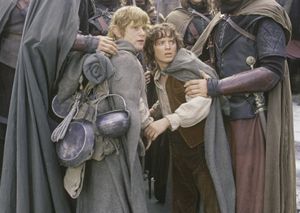
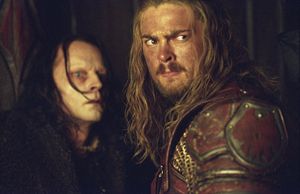
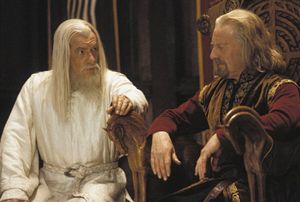
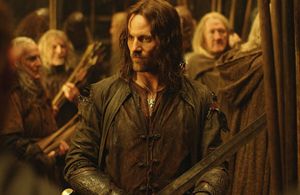
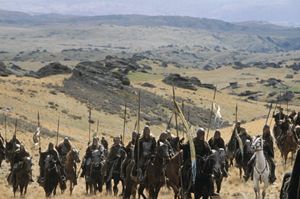
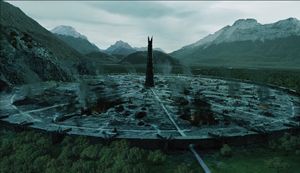
Most Popular




